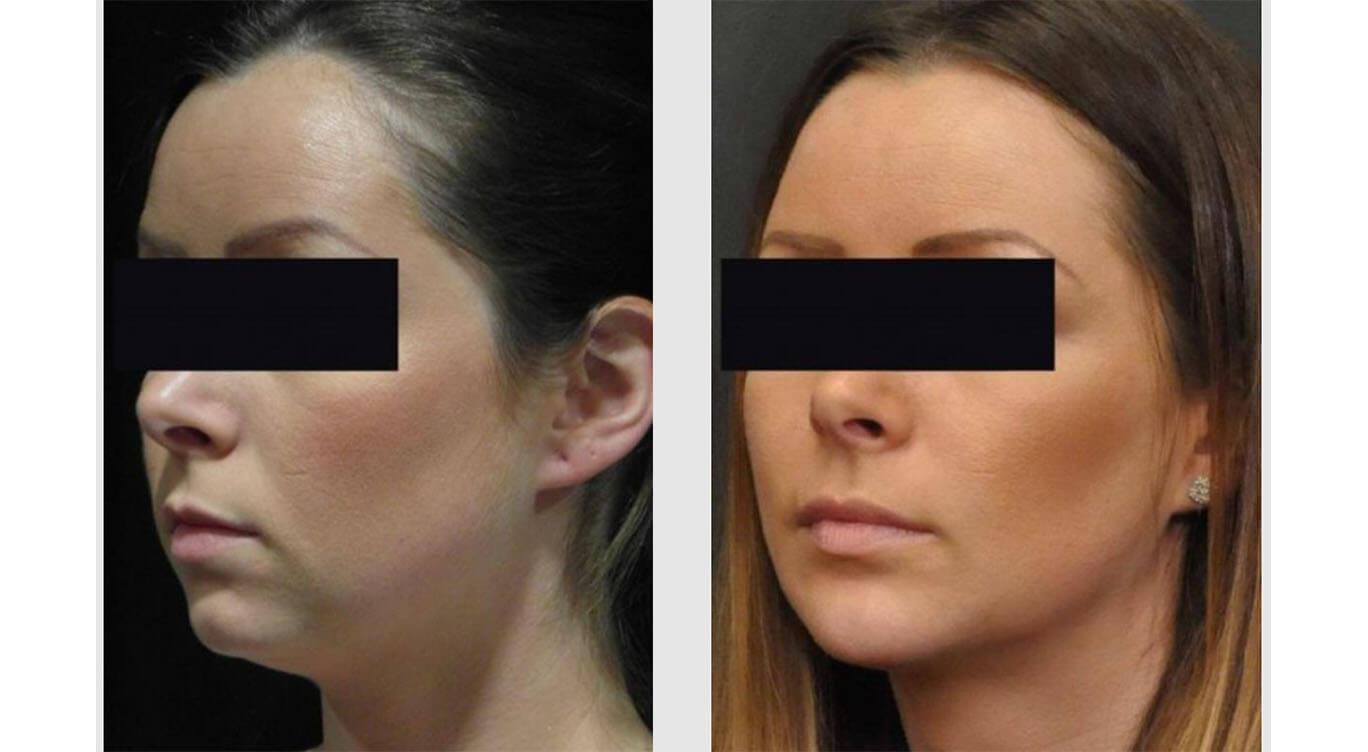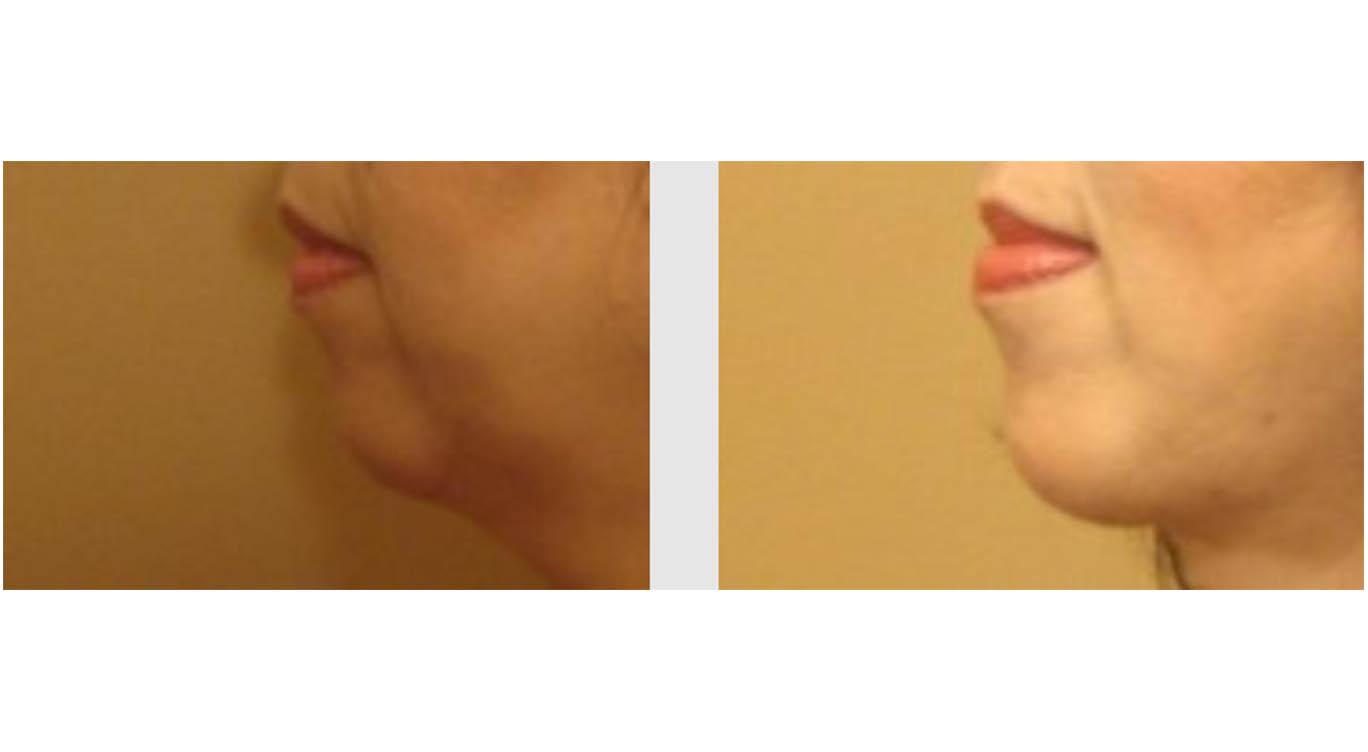With the enormity of the online beauty community, the term “face contouring” tends to take on a makeup-related connotation. Contouring with makeup can temporarily make the face look slimmer and more contoured. However, depending on the patient’s natural structure and desired look, makeup may not be able to achieve their desired look. For example, makeup contouring aims to accentuate the natural bone structure and make the face look smaller and slimmer. Outside of this, contouring cannot hide a recessed chin or lacking bone structure. Thankfully, there are other lower face contouring options. Seattle Plastic Surgery provides the best lower face contouring Seattle and Tacoma offers.
Overview: What Is Lower Face Contouring?
Lower face contouring is a broad term used to describe a group of cosmetic procedures that enhance the appearance of the lower face long term. This can include a single procedure or a combination of them as well as surgical and non-surgical procedures. Many procedures that contour the lower face are permanent while others will last several months to a couple of years.
This form of contouring primarily involves the chin and jawline. Though, sometimes the lips may also be enhanced. Contouring other areas of the face such as the cheeks and brows can also help balance the overall appearance of the face, including the lower face. Ultimately, the goal of any facial contouring procedure is to bring balance to the facial features and achieve the patient’s goals.
Why Its Done
Patients often have personal reasons for seeking out lower face contouring. However, there are many common ones such as:
- Double chin
- Recessed chin
- Sagging skin
- Signs of aging
- Gender affirmation
- Weak jawline
- Previous trauma to the area (usually more reconstructive than cosmetic)
- Abnormalities
- Help tighten the skin
- Enhance the facial profile
- Complement the neckline
Benefits & Risks
Undergoing any lower face contouring treatment—whether surgical or non-surgical—comes with unique benefits and risks. At a consultation appointment, the patient’s provider will run through both the advantages and risks associated with the procedure. Knowing and understanding these allow patients to make informed decisions and pick the best treatment for them.
Some of the possible benefits of lower face contouring include:
- Enhance natural contours of the face
- Several procedure options
- Surgical and non-surgical procedures available
- Slimmer looking face
- Long lasting results
- Complement other parts of the face
- Younger appearance
- Tighten the skin
- Better show off natural bone structure
- Correct lacking bone structure
- Permanent or long lasting results
- Often it can be performed without anesthesia or only with local anesthesia
- Administered by expert providers at Seattle Plastic Surgery
The risks can vary widely depending on the scope of the treatment. For example, filler injections usually have fewer risks than a surgical procedure. Though, all in all, lower face contouring procedures in Seattle are typically low risk for the average patient. Possible risks include:
- Infection
- Prolonged or severe side effects
- Nerve damage
- Blockage of a blood vessel
- Skin necrosis
- Asymmetry
- Unexpected result
- Some procedures may require surgery to reverse
Before

After

The Lower Face Contouring Process From Start To Finish
Consultation
During a consultation appointment at Seattle Plastic Surgery, a provider and patient will first discuss the patient’s reasons for seeking treatment and their goals. The provider will examine the face and provide recommendations based on the previous discussion. It is also important for the patient to relay their relevant medical history because it may impact what procedures are available and best for the patient.
After going through the benefits and risks of various options, the patient and provider will craft a treatment plan catered specifically to the patient, their goals, and their needs. Before leaving the office, the patient will have a good idea of the expected results, the treatment process, and the cost of the procedure(s).
Procedure
The exact procedures will differ from patient to patient. Some may undergo only one while other patients may undergo multiple. Additionally, lower face contouring can be surgical or non-surgical.
For non-surgical procedures, the most common way to contour the lower face is with dermal filler injections, most commonly hyaluronic acid-based filler. Dermal fillers strategically augment certain areas to improve the facial contours. They can also disguise features like a cleft chin or unwanted dimples. Other possible non-surgical lower face contouring procedures include:
- Botox injections
- Radiofrequency microneedling
- Deoxyochilic acid
- PDO threads
- Other areas of filler injections such as jaw filler, cheek filler, lip filler, etc.
Surgical procedures for lower face contouring can range from a fairly non-invasive surgery that takes under an hour to a more involved bone contouring surgery. Placement of chin implants and chin liposuction are two of the more common surgeries used to contour the lower face. Other surgeries sometimes used for or with lower face contouring include:
- Buccal fat removal
- Facelift
- Neck lift
- Chin reduction
- Cheek augmentation
- Lip lift
- Skeletal contouring (more common in facial feminization procedures)
Aftercare/Recovery
The aftercare and recovery necessary after lower face contouring depends on the procedure(s) performed. Non-surgical face contouring may involve:
- Side effects may include redness, swelling, itchiness, and bruising
- Gentle massage of the area as directed
- Applying ice for the first 48 hours
- Using over-the-counter pain medication as needed
- Avoid exercise on the day of the procedure
- Limit supplements, foods, and activities that can worsen swelling and/or bruising
- Able to return to normal activities within one to two days
Surgical jaw contouring comes with a longer and sometimes more intense recovery. Whenever possible Seattle Plastic Surgery’s providers limit side effects and recovery by taking measures like using local anesthesia, performing multiple procedures in one session, and customized aftercare instructions. A recovery following surgical lower face contouring in Seattle may involve:
- Side effects may include swelling, bruising, pain, itchiness, redness, and difficulty making mouth and jaw movements
- Take prescribed medications
- Do not exercise or do anything strenuous until cleared by a Seattle plastic surgeon
- Take time off work to adequately rest and recover
- May need to follow a liquid diet for two to three days
- Able to return to work in one to two weeks
- Full activities can resume within six to eight weeks
Frequently Asked Questions
Is Lower Face Contouring Good For Mature Skin?
Yes, lower face contouring can help address mature skin. Firstly, if notable skin sagging is present, a facelift and/or neck lift can remove excess skin and tighten the face’s contours. This can also help treat wrinkles and other signs of aging.
Patients with mature skin may also find benefits from dermal fillers in the lower face. With age, the body loses fat and bone which can alter the look and contours of the face. Filler injections can help patients maintain youthful-looking contours for longer.
How Painful Is Facial Contouring Surgery?
The plastic surgeons at Seattle Plastic Surgery perform lower face contouring surgery under either local or anesthesia surgery. This means that patients should not feel pain during the procedure. After surgery, some post-operative pain is expected. Depending on the procedure, the surgeon may prescribe pain medications, but patients are encouraged to switch to over-the-counter options as soon as possible.
Patients generally do not experience too much discomfort from facial contouring surgery and often do not need prescription pain medication. Additionally, pain usually subsides within a few days to a week.
Can You Reshape Your Face Without Surgery?
Yes, many non-surgical options can help reshape the face. However, non-surgical procedures are limited in what they can achieve and are temporary. However, in the right patient with the right goals, treatments like hyaluronic acid fillers and Botox can achieve the desired results.
Does Losing Weight Contour The Lower Face?
Sometimes, yes, losing weight can help contour the face. This is because fat comes off the body evenly and so areas that carry extra fat such as under the chin tend to reduce. Depending on the patient’s age and skin quality though, this may leave behind extra skin. Weight loss alone is often not enough to contour the lower face to a patient’s specifications.
How Much Is Lower Face Contouring In Seattle?
The cost of lower face contouring ranges from a few hundred dollars for a syringe of filler to thousands of dollars for certain surgeries. Therefore, a specific price quote is best obtained following a consultation. Our price list and Price Simulator tool provide pricing for specific procedures so patients can get a rough idea based on our offered treatments.
The Best Chin & Jaw Contouring In Seattle
Seattle Plastic Surgery—located in the First Hill neighborhood—has provided patients with high quality cosmetic care for over two decades. With a cozy office with free cookies and a selection of drinks, all patients at Seattle Plastic Surgery get the luxury experience whether their procedures are big or small. The providers at Seattle Plastic Surgery offer the best lower face contouring Seattle and Tacoma provides.
To learn more and schedule a consultation, call us at 206-324-1120. Patients can also reach out online via chat, contact form, and Price Simulator.

